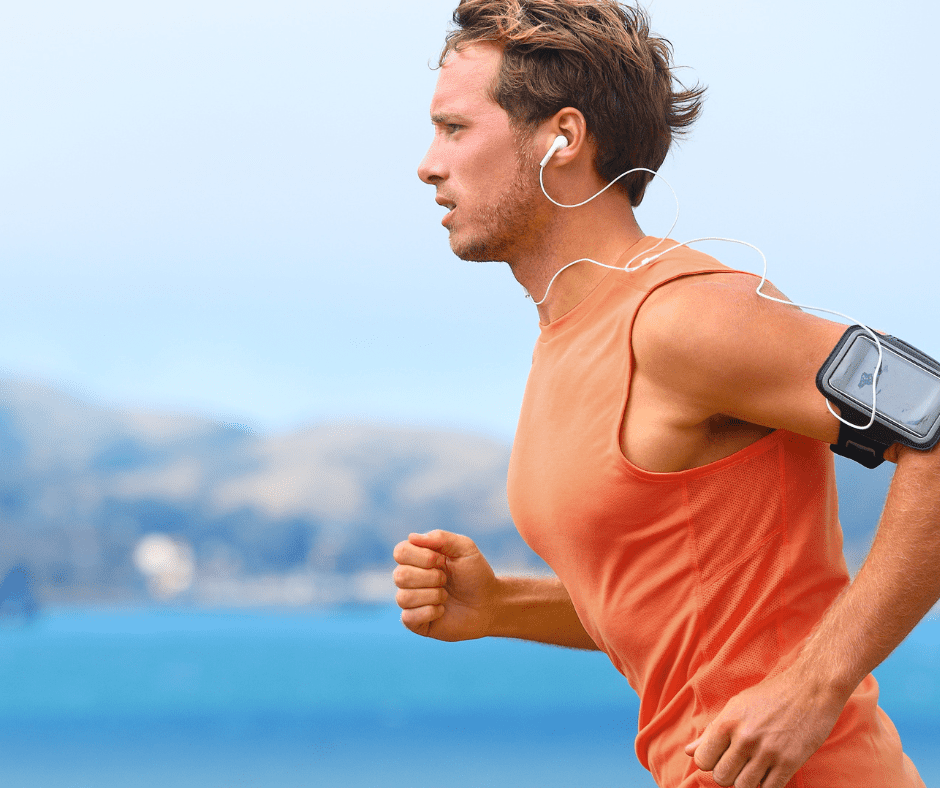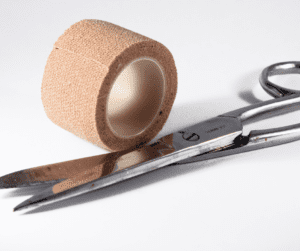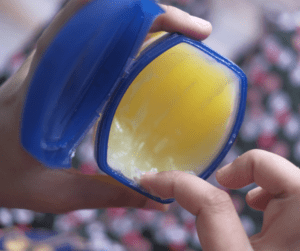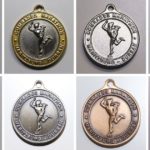We’ve all been at a race and seen some poor soul heading towards the finish and it looks like he may have been shot twice in the chest during the run…
…Upon closer inspection, you realize he may actually be bleeding to death.
From his nipples.
I joke about it, but any long-distance runner will tell you that nipple chafing is no laughing matter.
Chafed nipples, or runners’ nipple as it is sometimes called, can literally wreck a fantastic run.
Nipple chafing occurs when friction created between your nipple and shirt or sports bra causes chafing. It can be painful, but it can also be avoided.
With a little preparation your nipple chafing nightmare can disappear… here’s how!

What Causes Nipple Chafing On Long Runs
Chafed nipples are a very common running injury.
The great news is that preventing nipple chafe is quite easy with a bit of trial and error and proper preparation.
Chafed nipples are caused by the fabric on your vest, bra, or running shirt rubbing against your nipple.
Nipple chafe in females is less common than in men, but nipple chafe can happen to women too if their sports bras are a little loose fitting.
There is a good chance your nipples will chafe if there’s too much friction or movement between the nipple and the fabric that covers it.
Nipple chafe can get quite painful and as mentioned before, you often see runners coming into the finish of a race with blood streaks running down their vest.
Now that we know what causes nipple chafe, let’s see how you can prevent it…

How To Prevent Nipple Chafe While Running
The most effective and easiest way to reduce friction and prevent your nipples from chafing during a run is to put plasters onto your nipples and cover your nipples.
You’ll probably need to experiment with two or three different types of plasters or tapes before you find the right type for you.
I do find that certain plasters stick better on different types of skin.
You’re looking for a plaster that is going to stick well to your skin and stay stuck to your skin for the duration of your run. It’s also important to stick the plaster onto your nipple before you apply any moisturizing cream or sunscreen to your skin.
You want your skin and hands to be as dry as possible when you first stick the plaster to your skin and nipple. Any moisture on your nipple or skin will not allow the plaster or tape to stick properly.
If you’re a very hairy male, you may also want to shave the hair from the area around that nipple before you stick the plasters on.

Having a lot of hair under the plaster will allow moisture to seep under the plaster during the run and it may affect the stickiness of the plaster. In some cases it may even come off, causing the nipple to become exposed and susceptible to chafing.
You want the nipple area to stay dry so shaving the surrounding area before applying the plaster will help.
I also try to avoid plaster or tape with any type of gauze or dressing on it. This can also absorb moisture during a run which can affect the stickiness of the plaster.
Running in the correct clothing can also prevent your nipples from chafing.
Running in cotton shirts tends to make chafing worse, so good quality, a moisture-wicking shirt is ideal to run in.
Also, if you’re a female, make sure you are in a properly fitting sports bra.
The Best Plaster Or Tape To Prevent Nipple Chafing
In my experience, Elastoplast works quite well. I’ve used two or three different types of plasters in the past but you are looking for something that will stick and stay on throughout your run.
Kinesio tape also works very well and sticks for a long time.
Experimenting with the size of the piece of plaster you use can also impact how effective it is.
You may want to just cover the bit of your nipple that sticks out or you may want to cover the entire areola.

For some runners, a tiny square of plaster is enough to cover and protect the nib of the nipple. For others, a lot more plaster is needed.
You also want to ensure that the corners are stuck down properly too.
A corner that is not securely stuck down can sometimes catch on your running shirt and the movement and rubbing over time can cause the plaster to come off.
Best Running Shirts For Nipple Chafing
AVOID cotton at all costs! Cotton absorbs sweat and stays wet. The shirt you should be wearing must be made of synthetic, sweat-wicking fabrics.
Cut off all seams and tags as they can irritate. Your shirt should NOT be baggy either.
How Long Does It Take For Chafed Nipples To Heal
The healing time depends on the conditions and extent of the nipple chafe.
If it’s just a bit sore.., then the healing process could be within a few hours after you stop running, but if it’s serious it could take up to two to three weeks to heal properly.
How To Stop Nipple Chafing During A Running Race?
If you feel that burning sensation that chafed nipples causes coming on during a race, you can apply an anti-chafing balm.
A lubricant like petroleum jelly or Vaseline, for example, can work too.

If there is a first aid or medic station on the race route, they should have some kind of lubricant that will help.
They may also have plasters, which would be first prize.
NB: If you are going to apply plaster to your nipples during a run, try and dry your skin as best you can.
If there’s nothing around and you aren’t able to apply a lubricant or plaster, then one of the ways that you can stop your vest from actually physically chafing against your nipples is to wet your vest.
Every time you get to a refreshment station or water point, just spray or pour water across the chafed area.
Doing this will make your clothes stick to you, and they will then move with your body because it’s stuck on the body, rather than causing that friction between the two.
On the odd occasion that I’ve forgotten to use plasters, keeping my chest and vest wet has been the most effective way for me to stop my nipples from chafing in the absence of being able to get something to put on my nipples during a run or race.
How To Treat Chafed Nipples From Running
You must treat the wounds as soon as possible to prevent them from getting worse.
Note… Running through this type of injury will only make it worse.
This is what you can do to help with the healing process of your chafed nipples:
- Take time off from running to allow your nipples to heal completely. Do some cross-training and strength training instead. (Here’s a free strength training program)
- Wash the wounds with a non-chemical soap and unscented soap and then dry them well.
- The wound can turn into an infection easily so it’s a good idea to use an antiseptic cream.
- Cover the wounds with breathable gauze to keep unwanted dirt off your nipples but at the same time provide breathing room.




Comments are closed.